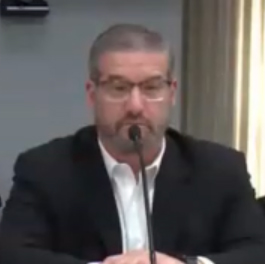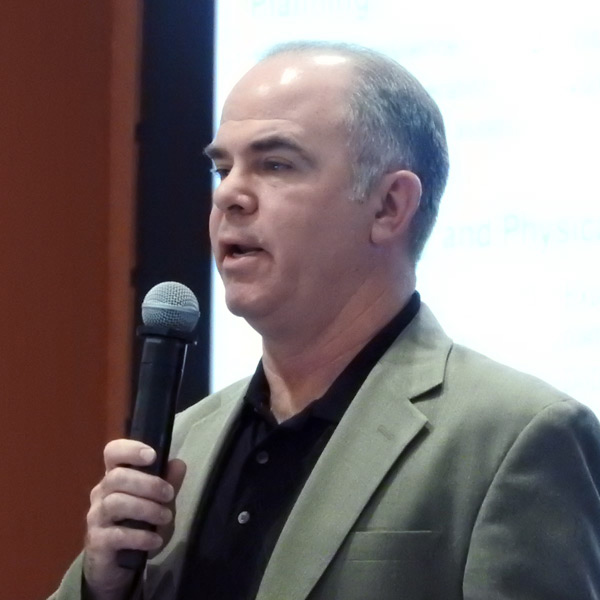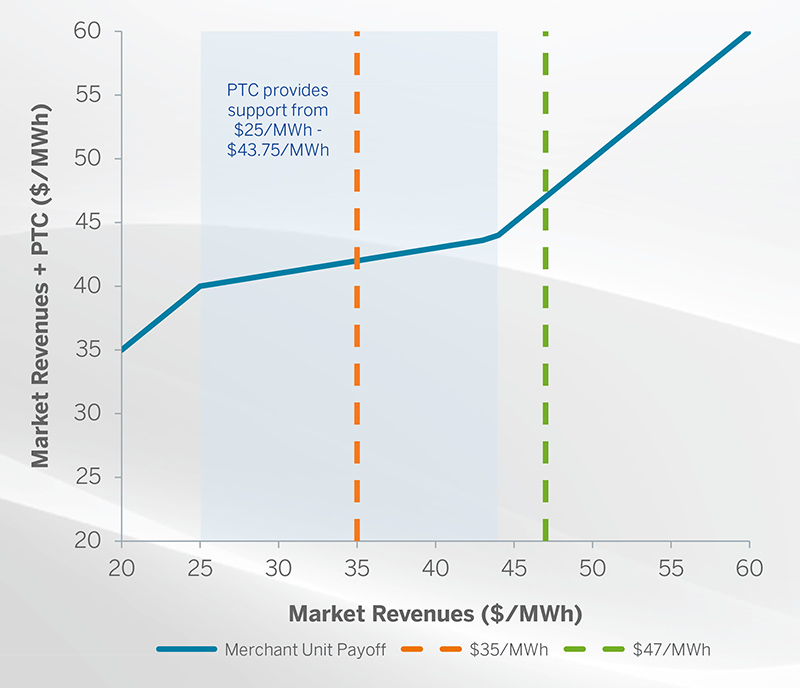CAMBRIDGE, Md. — Opening PJM’s Annual Meeting on May 1, CEO Manu Asthana said organized markets and planning have continued to stand the test of time, but challenges lie ahead as stakeholders wrestle with a possible overhaul to the capacity market to address future resource adequacy concerns, in part sparked by the impact of the December 2022 winter storm.
“Just within PJM we estimate our markets … bring in $4 billion in value each year to customers and producers. I know there’s a lot of rhetoric lately about RTOs and organized markets, and I just want to say RTOs and organized markets are” efficient and transparent, Asthana told the Members Committee at the meeting.
Though this is not the first time PJM has experienced a major energy transition, pointing to the shift from coal to natural gas for generation, Asthana said the clean energy transition presents a new, global challenge that will require the RTO to continue to evolve.
The need to interconnect more renewable energy could be exacerbated by a significant number of generation retirements that are expected through 2030, Asthana said, referencing PJM’s February Resource Retirements, Replacements & Risks (4R) report, as reserve margins are expected to shrink because of electrification and data center load growth.
The winter storm, also known as “Elliott,” underlined many of those concerns, leading PJM’s Board of Managers to initiate a Critical Issue Fast Path (CIFP) process in February to gather stakeholder proposals for the board to consider later this year. That process is currently in the second of four phases. (See PJM Stakeholders Refine CIFP Capacity Market Proposals.)
Though the storm was within the studied conditions that could be expected within PJM, Asthana said it was concerning that emergency procedures were required to meet load during the storm, and it’s necessary to now think about what can be done differently to not get as close to the edge next time.
“The question is, did our Capacity Performance [CP] rules work as intended? … I think it’s important that we look at that and think about that,” he said.
Last year’s FERC approval of a new system for handling interconnection requests — allowing PJM to work through its queue backlog quicker — will go a long way toward navigating the transition, Asthana said. (See FERC Approves PJM Plan to Speed Interconnection Queue.)
“That complicated piece of work is a big deal for us. It is a big deal from a reliability perspective. It is a big deal from an energy transition perspective. It is a big deal from the perspective of helping our states and our members reach their energy transition goals,” he said.
PJM’s State Agreement Approach (SAA) has also proven itself to be a valuable tool for states to work with the RTO to meet their clean energy goals, he said. New Jersey received FERC approval for the cost allocation portion of its first SAA process to construct the transmission necessary to interconnect 7,500 MW of offshore wind. The state announced a second SAA process with the goal of developing 11 GW of offshore wind capacity by 2040. (See NJ BPU Backs Plan for 2nd Grid Upgrade Process with PJM.)
MC Chair David “Scarp” Scarpignato said Elliott was both an accomplishment for PJM and a struggle: The RTO kept the lights on while managing to provide aid to surrounding regions, but it laid bare unforeseen reliability issues. While a sudden emergency hasn’t occurred recently, it remains a real risk, and stakeholders must consider changes to price signals, a “circuit breaker” system for limiting extended periods of high pricing and the market seller offer cap, he said.
“Last year, the defining accomplishment or struggle for PJM at large was Elliott and how well our market reliability procedures and rules worked,” he said. “We, collectively, did keep the lights on.”
Panel Discusses Future Reliability Landscape
Independent Market Monitor Joe Bowring and PJM administrators shared how they’re working to maintain reliability through the clean energy transition through state, market, operations and planning initiatives.
Asim Haque, PJM vice president of state policy and member services, outlined the series of “Energy Transition in PJM” reports the RTO is publishing, detailing the challenges presented by the transition and possible solutions. The first iteration, “Reliability in PJM: Today and Tomorrow,” was released in March 2021, while the 4R study earlier this year was the most recent. He categorized the identified reliability concerns as immediate, largely pertaining to Elliott; near term, relating to resource adequacy in the latter portion of this decade; and upcoming, which includes essential reliability services.
“We do believe we are relatively well positioned today, but we are concerned this position may not hold for the not too distant future … so we feel some sense of urgency to act to maintain reliability,” Haque said.
In visiting state legislatures, he found that each have their own priorities but are all bound together by a desire for reliability. He recounted telling states that regardless of their individual goals, it is a reality that PJM’s interconnection queue is primarily composed of renewable resources, and planning the future of the grid will have to reflect that.
“The finding that most directly impacts reliability as we transition to greater renewable penetration is the conclusion that we will continue to need our thermal resources and the essential reliability services they provide in order to preserve reliability until a replacement technology for these resources is deployable at scale,” he said.
Senior Vice President of Operations Mike Bryson said there have been multiple retirements announced since the 4R study that weren’t anticipated during the document’s drafting, and some scenarios for this summer are showing operating reserve shortages this summer for the first time he can remember. The reliability-must-run (RMR) system is one potential area for improvement, as he believes there may be a more significant need for those contracts in the future.
Bowring said increasing reliance on RMR agreements could create an incentive to retire, and they should be used with caution. Bryson said they offer a benefit in allowing some flexibility in addressing policy retirements that could impact reliability, an area that cannot be met through market changes.
Ensuring the right types of reserve products and all necessary characteristics are being captured in offers and procured is critical to provide dispatchers assurance that when they call on resources, they will receive what has been committed, said Vice President of Market Design and Economics Adam Keech. The transition provides an opportunity to use markets to shape the grid of the future, focusing on flexibility and providing incentives as a proactive solution.
“Now is the time to use the markets proactively to send the right signal, so we attract the right resources we need,” he said.
Bowring said Elliott showed the flaws of having energy market incentives manifest in the capacity market and that extreme prices and penalties can have a destructive effect. He cautioned against creating new cost-of-service constructs as a reaction to the storm, saying that wouldn’t promote reliability; market solutions should be sought instead.
Vice President of Planning Ken Seiler said PJM is potentially on track to complete interconnection studies on projects with a nameplate capacity equal to resources expected to retire in the coming years, but much of that new generation is intermittent, which will push the RTO to change how it acts under various system conditions.
The first-come-first-serve interconnection model approved by FERC last year allows PJM to transfer the capacity interconnection rights of generators that complete the study process and receive an interconnection service agreement (ISA) but do not complete construction within a year. Seiler said PJM has seen a large number of projects that receive ISAs but haven’t entered construction.
Stakeholders Approve New Terms for 3 Board Members
The MC voted to reseat three board members whose terms expired: Jeanine Johnson, Margaret Loebl and Charles Robinson.
The committee also elected Vickie VanZandt to continue filling the remaining year left on the term previously held by Sarah Rogers, who retired in September 2022.
Johnson brings a background in cybersecurity and product design to the PJM board, to which she was elected in 2021, according to PJM’s biographies of the candidates. She was shortlisted as Entrepreneur of the Year by the Women in IT Awards for co-founding a company commercializing a product to create drinking water.
Loebl has held officer positions in finance at several companies, most recently serving as executive vice president and CFO at AgroFresh Solutions, and has worked with the board of companies on acquisitions, strategy, controls infrastructure and risk management, according to her biography. She was elected to the board in 2020.
First elected in 2011, Robinson serves as general counsel for the Regents of the University of California and was previously general counsel for CAISO. He has also served as a senior attorney for several companies, including Packard Bell and Raychem Corp.
President of VanZandt Electric Transmission Consulting, VanZandt was appointed to the board in 2022. She previously served as the senior vice president and chief engineer of transmission services for the Bonneville Power Administration and served on the ISO-NE Board of Directors.
States Argue Board Didn’t Consult Membership on Auction Delay
The MC voted to approve the minutes of its special meeting held April 4, but five states objected to them because they stated that PJM provided an update on the Base Residual Auction schedule and consulted with membership on delaying upcoming auctions.
The board is required to consult with stakeholders prior to making any Federal Powers Act Section 205 filing under the RTO’s tariff. PJM made a Section 205 filing to delay future auctions following the meeting on April 11 (ER23-1609).
“The board members weren’t present to have that discussion, so it was kind of a misrepresentation of what that meeting would entail,” said Gregory Poulos, of the Consumer Advocates of the PJM States. He added that the objecting states didn’t believe that it constituted an adequate consultation.
 Robert Kuzman, MISO | Illinois Commerce Commission
Robert Kuzman, MISO | Illinois Commerce Commission Mike Bryson, PJM | © RTO Insider LLC
Mike Bryson, PJM | © RTO Insider LLC